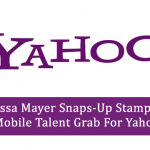
Anyways, Twitter does not possess the sort of targeting potentialities that Facebook has when it comes to advertising. Twitter simply does not know as much about its users as Facebook does. However, as the company works to improve its monetization strategy, it is going to need to continue to improve the experience for advertisers.
Besides, it would not change its iconic Twitter logo, for instance, a bird with a blue background, into one with a pink background on your tweets if you are clearly female.
In fact, establishing gender on Twitter, which has 140 million monthly active users, can be difficult. Not everyone uses their own photos, Twitter names that are female or even profiles that make it easy to discern gender. And with that, the company has unfurled the concept of gender targeting, which it says human testers have found to be over 90% accurate, despite the fact that Twitter does not know for sure when users are male or female.
In a blog post titled, “Gender targeting for Promoted Products now available,” Twitter’s product manager of revenue, April Underwood writes:
“We have frequently heard from marketers that you would like to be able to target your Promoted Products campaigns by gender,” says Underwood. “It’s a tough feature for us to pull off since we do not ask people to share their gender on Twitter, and some people do not identify themselves by gender anyway. Further, we are not aware of any ‘male’ or ‘female’ businesses or organizations.”

Image Credit: (WebProNews)
In fact, those indications are in part based on what information users provide on Twitter, including their profile names or the other Twitter accounts they follow.
Underwood continued stating that a “panel of human testers has found our predictions are more than 90 percent accurate for our global audience. And where we can not predict gender reliably, we do not- and those users would not be targetable through this feature.”
The company further states: “We have been working on using a variety of indications that could help us understand our users’ gender reliably, while maintaining the simplicity of the Twitter profile that our users value. These signals have proven effective in inferring gender, so starting today, we are making gender targeting available to all marketers.”
Gender targeting can work, she said, for things like a “new line of cosmetics” – (or floral PCs or pink pens) – “without having its message delivered to men not likely to be interested in that content.”
Fortunately though, Twitter advertisers can now target their promotions based on gender. This type of targeting join the existing mobile, geographic and interest-based targeting options already available. Twitter, Underwood says, is making the move based on what those in marketing say they want.
Similar to our approach to interest targeting, we’re able to understand gender by taking public signals users offer on Twitter, such as user profile names or the accounts she or he follows. We have strong confidence in this approach. A panel of human testers has found our predictions are more than 90 percent accurate for our global audience. And where we can’t predict gender reliably, we don’t – and those users won’t be targetable through this feature.
“Despite these factors, we believe there is value to having more contextual signals, including gender, so that messages reach the most relevant audience,” she adds. “Just as marketers do not want their ads to reach people who are not interested in their message, people either do not want to see mistargeted ads.”
Nevertheless, now that Twitter can more-or-less ascertain who is female and who is male, it can help advertisers target those audiences. In addition to rolling out gender targeting to all marketers, the social network has also upped its advertising chops with “interest targeting,” “location targeting,” and a massive expansion to mobile.


